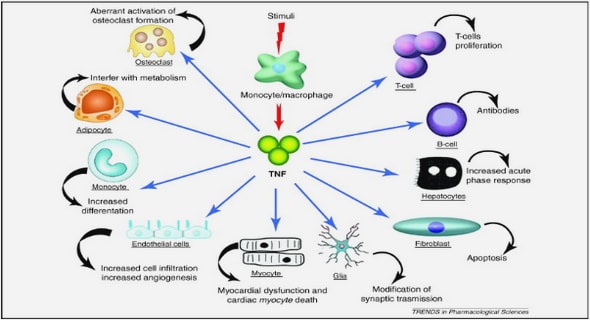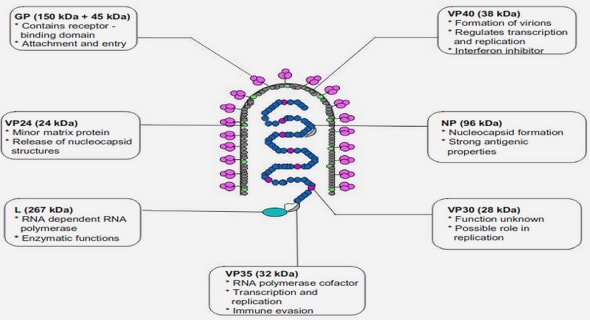Get Complete Project Material File(s) Now! »
Short term impact on the atmosphere
Besides the intended planetary cooling, the injected aerosol would have further impacts on the atmosphere. Some of them would already occur on the short term (within days), i.e. before the cooling of the Earth’s surface takes place (on the time scale of years). The increase in aerosol surface area density can favour heterogeneous chemical reactions leading to the destruction of stratospheric ozone [Tilmes et al., 2008, 2009, Pitari et al., 2014]. Though, the expected increase in harmful UV radiation at the Earth’s surface might be compensated by increased scattering of UV radiation by the stratospheric aerosol, which induces more absorption by ozone because of a longer photon path. The heating of the lower stratosphere and upper troposphere (UTLS) through absorption of radiation by the aerosol [e.g. Ferraro et al., 2011] can have multiple effects. Aquila et al. [2014] and Niemeier and Schmidt [2017] found that the quasi-biennial oscillation (QBO) in the equatorial stratosphere would slow down for SAI injection rates below 5 Tg(S) yr1 and even break down for larger injections. This change in the stratospheric dynamics may affect the tropospheric climate, but also the spatial distribution of the aerosol itself, because the speed of the meridional transport depends on the phase of the QBO. Another effect of a warmer UTLS would be an increase of the stratospheric water vapour concentration, since more water could pass the warmed tropical cold-point tropopause. The additional water would act as a greenhouse gas, thereby further reducing the cooling effect of SAI, and it could enhance ozone destruction. Furthermore, the heating would affect cirrus clouds in the upper troposphere. Kuebbeler et al. [2012] found that the stabilisation of the UTLS due to the aerosol heating results in a thinning of cirrus clouds, which would contribute 60% to the overall cooling effect of SAI. In contrast, the direct microphysical effect of sedimented sulphate particles on the properties of cirrus clouds (i.e. sulphate particles acting as ice nuclei) would probably be small [Cirisan et al., 2013].
Aerosol reaching the Earth’s surface
Since sulphate aerosol is one of the major air pollutants in the troposphere, its fate once it left the stratosphere and the impact it may have at the Earth’s surface need to be studied. Sulphate aerosol is removed from the troposphere within days, mostly through wet scavenging in and below clouds, thereby increasing the acidity of the precipitation. The deposition of acids can harm vulnerable ecosystems. In a previous study, Kravitz et al. [2009] found that the additional deposition (mainly over midlatitude oceans) would be well below critical loadings for most ecosystems. Overall, it would be negligible in comparison to the amount coming from current anthropogenic sulphur emissions in the troposphere. This result nevertheless awaits confirmation from other models. Another possible negative impact of SAI aerosol at the Earth’s surface could be that the aerosol coming from the stratosphere might increase particle concentrations in ambient air before its deposition to the ground. Under present conditions, particulate matter with a diameter below 2.5 m (PM2.5) in outdoor ambient air might be responsible for about 3 million premature deaths per year worldwide [Lelieveld et al., 2015]. Most of the anthropogenic aerosol sources in the troposphere are rather close to populated areas, which causes their high impact on human health, whereas additional particles from SAI would probably be distributed over less populated areas where they would have a smaller impact. However, tropospheric pollution is expected to decrease in the future because of more stringent air quality policy and public awareness. Therefore increased pollution « from above » could be a sensitive issue that needs to be further examined.
Tailored climate engineering techniques
Given the characteristic effects and side effects of different SRM techniques and deployment strategies, one can evaluate the potential of combining several of them in portfolio approaches. It might be possible to design them in such a way that residual climatic changes on the regional scale and unintended side effects are minimised. Cao et al. [2017] recently simulated such a « cocktail » of SAI and cirrus cloud thinning (CCT) and found that this could allow restoring both, pre-industrial temperature and precipitation on the global scale, which is not possible with SAI alone. Kravitz et al. [2016] and other recent studies have put more emphasis on this design perspective on SRM. They argue for defining certain objectives and acceptable outcomes of geoengineering in the beginning and then finding the best solution to this design problem, while most other studies just choose a rather simple SRM scenario initially and then evaluate its impact. The design issue is an important aspect of SAI to consider.
Weaknesses of previous studies
Recent reviews of the studies regarding SAI [Irvine et al., 2016, MacMartin et al., 2016, Visioni et al., 2017] highlighted the need for a more accurate representation of stratospheric aerosols in climate models. The accuracy of these models is of great importance, because the aerosol size distribution and also its spatial distribution are crucial for the impact of SAI, both the intended cooling and the unintended side effects. But most of the models used for previous studies had at least one or even several of the following weaknesses:
They use a rather constrained and possibly less accurate modal aerosol scheme (see Sect. 1.3.4) [e.g. Ferraro et al., 2011, Aquila et al., 2014, Niemeier and Timmreck, 2015], which might not produce realistic aerosol size distributions under the exceptional conditions of SAI. Some models are even based on simplistic bulk aerosol schemes with prescribed aerosol properties. Only few models use the probably most accurate, though computationally more expensive, sectional modelling approach, which allows a free evolution of the aerosol properties. Among these, some reduce the computational cost by assuming complete zonal symmetry and using a two-dimensional aerosol model [e.g. Heckendorn et al., 2009, Weisenstein et al., 2015].
They have a coarse spatial resolution on the vertical [e.g. Niemeier and Timmreck, 2015]. They are therefore not able to simulate realistic stratospheric dynamics and have to prescribe features like the quasi-biennial oscillation (QBO).
The feedback of the aerosol’s radiative effects (e.g. stratospheric heating) on the atmospheric dynamics is missing [e.g. Tilmes et al., 2009, English et al., 2012]. This may result in unrealistic spatial aerosol distributions and the underestimation of climate impacts.
They focus on the negative SW forcing of the aerosol and do not consider to which extent it is compensated by the positive LW forcing, i.e. the additional greenhouse effect of the aerosol [e.g. Heckendorn et al., 2009, Pierce et al., 2010].
Research questions addressed in this thesis
Given the deficiencies of previous studies presented above, we decided to develop a new aerosol module within the atmospheric general circulation model LMDZ as a more appropriate tool for studies of SAI. The model called LMDZ-S3A (Sectional Stratospheric Sulphate Aerosol) tries to overcome the weaknesses of other models mentioned above by using a sectional aerosol scheme, with particles active in the SW and LW spectral range, full interaction of the aerosol with radiation allowing feedback on the dynamics, and a high vertical resolution. The details of the model are described in Chapter 3, which is based on the publication by Kleinschmitt et al. [2017a]. We use this tool to provide some answers to the following questions:
How does the RF of SAI scale with the amount of SO2 injected?
How sensitive is the RF to the injection height and strategy?
What is the impact of the resulting stratospheric heating on the dynamics, especially the QBO?
What impact of the aerosol at the Earth’s surface can be expected?
What are the rapid atmospheric adjustments to the aerosol, i.e. how do temperature, clouds, and stratospheric water vapour concentration change? And how do these changes contribute to the effective radiative forcing (ERF) of SAI?
What would be the potential of combining SAI and marine cloud brightening (MCB) and how would their RF add up?
After the description and evaluation of the model in the following chapters, we will present and discuss the results of various SRM model experiments with respect to the questions presented above.
Quasi-biennial oscillation in the stratosphere
The vertical extension to the LMDZ domain, as discussed above, is accompanied by a new stochastic parametrisation of gravity waves produced by convection which is documented in Lott and Guez [2013]. This is another difference to the original LMDZ5A model configuration described in Hourdin et al. [2013] which did not include this parametrisation. The combination of the extended vertical resolution in the lower stratosphere and the gravity wave parametrisation generates a QBO in the model, as shown in Figure 3.1 and documented in Lott and Guez [2013]. The amplitude of the QBO around 10 hPa is around 10–15ms1 and is smaller than observed (20–25ms1). The easterly phases are also stronger and longer in duration than the westerly phases, which is realistic. One subtle difference with the QBO shown in Lott and Guez [2013] is that here the connection with the semi-annual oscillation (SAO) above is quite pronounced, whereas it was not so evident in Lott and Guez [2013]. This is because the characteristic phase speed we have recently adopted for the convective gravity waves Cmax = 30ms1 [de la Cámara et al., 2016] is smaller than for the convective gravity waves parameter we used in Lott and Guez [2013]. The stronger connection can be further explained by the fact that more waves travelling through the QBO sector will likely be absorbed by the critical levels produced by the SAO. Finally, it is worthwhile to recall that our QBO does not extend down to 100 hPa, in contradiction with observations. In our model, it is probably due to the fact that we underestimate the explicit slow Kelvin waves that play a crucial role in the lower stratosphere (Giorgetta et al. [2006], for the Kelvin waves in models, see Lott et al. [2014]).
It is noticeable that the period of our simulated QBO in Figure 3.1 shortens and its amplitude increases during the second half of the simulation, i.e. as the aerosol layer builds up in the lower stratosphere. More precisely, the QBO has a period well above 26 months during the first five years before evolving to an almost purely biennial oscillation by the end of the simulation. This could be due to the warming of the stratosphere induced by the developing stratospheric aerosol layer (up to 1.5K in the tropical lower stratosphere), which would be consistent with the opposite behaviour found when the stratosphere cools, e.g. in response to an increase in greenhouse gases (for the intensity and period see de la Cámara et al. [2016], for intensity only, see the observations in Kawatani and Hamilton [2013]). As our simulation is quite short, this result should be consolidated by longer runs. It should also be kept in mind that since the QBO in our model is probably oversensitive to changes in greenhouse gases, it may also be oversensitive to the aerosol content.
Table of contents :
1 Introduction
1.1 Climate change and the need for mitigation
1.2 Climate engineering
1.2.1 Overview of proposed climate engineering techniques
1.2.2 Stratospheric aerosol injection
1.3 Atmospheric aerosols
1.3.1 Aerosol properties
1.3.2 Tropospheric aerosols
1.3.3 Stratospheric aerosols
1.3.4 Numerical modelling of aerosols
1.4 Outline of the thesis
2 The physics of stratospheric aerosol injection
2.1 The aerosol distribution and its properties
2.2 Competing radiative effects
2.3 Efficacy and scalability
2.4 Short term impact on the atmosphere
2.5 Climate impact
2.6 Aerosol reaching the Earth’s surface
2.7 Tailored climate engineering techniques
2.8 Weaknesses of previous studies
2.9 Research questions addressed in this thesis
3 Description of the LMDZ-S3A atmosphere-aerosol model
3.1 Overview of previous modelling efforts
3.2 The host atmospheric model LMDZ
3.2.1 Model physics and resolution
3.2.2 Tropopause recognition
3.2.3 Quasi-biennial oscillation in the stratosphere
3.2.4 Nudging to meteorological reanalysis
3.3 The sectional stratospheric sulphate aerosol module S3A
3.3.1 Prognostic variables
3.3.2 Semi-prognostic sulphur chemistry
3.3.3 Nucleation
3.3.4 Condensation and evaporation of sulphuric acid
3.3.5 Competition between nucleation and condensation
3.3.6 Coagulation
3.3.7 Aerosol chemical composition and density
3.3.8 Sedimentation
3.3.9 Aerosol optical properties
3.3.10 Model code availability
3.4 Conclusions on the model
4 Evaluation of the LMDZ-S3A model
4.1 Validation of aerosol optics and radiative transfer
4.2 Non-volcanic background aerosol
4.3 Mount Pinatubo 1991 eruption
4.3.1 Aerosol distribution and size
4.3.2 Stratospheric temperature anomaly
4.4 Sensitivity studies under Pinatubo conditions
4.4.1 Sensitivity to van der Waals coagulation enhancement factor .
4.4.2 Sensitivity to the sulphur dioxide chemical lifetime
4.5 Conclusions on the model evaluation
5 Studying stratospheric aerosol injection with LMDZ-S3A
5.1 Simulation setup
5.2 Results from the reference experiment
5.3 Sensitivity to the injected sulphur dioxide mass
5.4 Comparison with results from Niemeier and Timmreck [2015]
5.5 Sensitivity to injection height
5.6 Sensitivity to spatio-temporal injection pattern
5.7 Effect of radiatively interactive aerosol
5.8 Impact on the quasi-biennial oscillation
5.9 Rapid adjustments and effective radiative forcing
5.10 Impact of aerosol optical properties on the results
5.11 Sulphate impact at the Earth’s surface
5.12 Conclusions on the stratospheric aerosol injection simulation results .
6 Combining stratospheric aerosol injection (SAI) and marine cloud brightening (MCB)
6.1 Simulation setup
6.2 Aerosol direct vs. indirect effect in the MCB experiment
6.3 Rapid adjustments and effective radiative forcing of MCB
6.4 Spatial differences between instantaneous and effective radiative forcing
6.5 Additivity and complementarity between SAI and tropical MCB
6.6 Conclusions on simulations of SAI and MCB
7 Conclusions
7.1 Summary
7.2 Perspectives
Acknowledgements
List of acronyms
Publications
Bibliography


